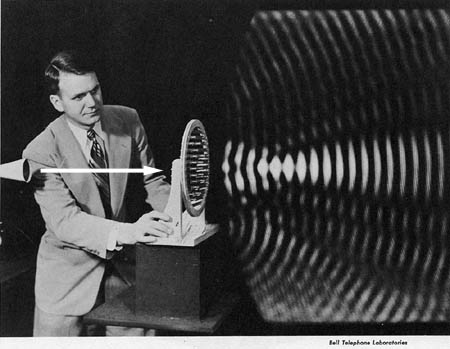Difference between revisions of "256a-fall-2017/hw2"
From CCRMA Wiki
(→Specification (part 1 of 3): Naming + Compilation) |
(→Deliverables) |
||
| Line 57: | Line 57: | ||
** links to your files of various kinds | ** links to your files of various kinds | ||
** instructions on building the project (for example, anyone in the class should be able to download) | ** instructions on building the project (for example, anyone in the class should be able to download) | ||
| + | ** a few screenshots that capture great parts of your visualizer in action | ||
** a short text section that: | ** a short text section that: | ||
*** conveys your ideas/comments in constructing each program | *** conveys your ideas/comments in constructing each program | ||
Latest revision as of 19:48, 11 October 2017
Contents
Homework #2: Sound Peeking
Due date: Sunday 2017.10.15 11:59:59pm.
In this assignment, you are to visualize sound in real-time, using OpenGL for the graphics programming, and integrated ChucK as a sound source. Your program will visualize: 1) live microphone input and 2) a designed sound narrative written in ChucK!
Specification (part 0 of 3): Reading
- please read: Some Principles of Visual Design for Computer Music
- (for reference) the original OpenGL (1.1) "The Red Book"
- download and play with sndpeek
Specification (part 1 of 3): Naming + Compilation
- choose a name for your program
- get a framework compiling on your system; might wish to start from the VisualSine example (time domain waveform rendering)
- use the chuck_fft.* files found here NOTE: this library ONLY works with single-precision floating point numbers (e.g., float)
Specification (part 2 of 3): Visualizing the spectrum
- implement short time fourier transform, and visualize the spectrum over time
- considerations:
- windowing (rectangular, hann, hamming)
- window size
- FFT size
- hop size (for now, hop size can equal window size)
- implement either a waterfall plot (like sndpeek) or a real-time scrolling spectrogram
- test using the microphone input!
- use a simple chuck program that hooks up the microphone to the output so you can test your chuck setup as well as your visualizer.
- (hint: in chuck, the input / microphone is adc)
Specification (part 3 of 3): An Audio-Visual Narrative
- create a ChucK program to run inside your visualizer
- use a combination of microphone (adc in ChucK) and sound synthesis
- think about different "sections" or "movements", and how to transition between them
- try to align the aesthetic of your visualizer and your ChucK program (give it personality)
- (optional): can use keyboard input
- aesthetic goal:
- polish not important!
- technical fanciness not important!
- making the viewer/listener feel something: important!!
Note
- have fun with it!!!
- PRINT OUT USAGE/KEYS TO CONTROLLING YOUR VISUALIZATION ON THE CONSOLE EVERY TIME YOUR VISUALIZER STARTS! (see sndpeek)
- comment your code!
- choose your own coding conventions - but be consistent
- you are welcome to work together, but you must do/turn in your own work
Deliverables
turn in all files via coursework, with concise online documentation + readme
- 0) source code to the project (*.h, *.cpp, *.c makefile, etc.)
- 1) screenshots of your visualizer!
- 2) HTML page for your project (if you have a CCRMA account, should be viewable at http://ccrma.stanford.edu/~YOURID/256a/hw2/). It should include:
- links to your files of various kinds
- instructions on building the project (for example, anyone in the class should be able to download)
- a few screenshots that capture great parts of your visualizer in action
- a short text section that:
- conveys your ideas/comments in constructing each program
- describes any difficulties you encountered in the process
- lists any collaborators
- 3) a high-resolution (screen capture or with camera) video of your visualizer / audio-visual narrative
- 4) upload to Canvas. don't forget to include the HTML for your website!
- 5) (if you are using the VisualStudio project, please delete the intermediate directories and .vs hidden folder before uploading. these can get really large sometimes and we will have to download all your homeworks...)
